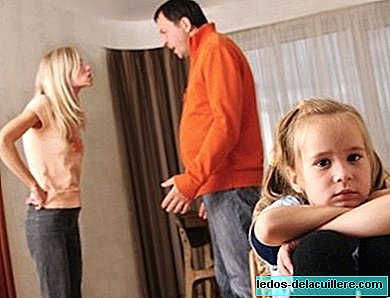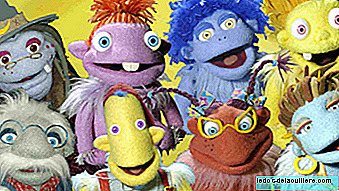
It's twelve o'clock in the morning, the house is silent and dark, everyone sleeps, but something begins to move in the children's room, your three-year-old son who slept peacefully until a minute ago began to shake. Well, it seems that he does not find the posture, which my grandmother would say, but it is something else, this is not normal, he does not stop moving and begins to move his arms, turns, hits the bed, sits and looks at you without See you while crying and screaming. You call him to calm down and wake up but he doesn't hear you, you try to reach him but he runs away from you.
If you have been through this situation you will know what it is to feel helpless, what fear is. If you have not passed it yet, I will tell you that you are going to experience one of the worst nights of your life, you are facing an episode of what we call night terrors: what they are and what you can do in those cases It's something we're going to try to explain.
Night terrors affect 6% of children between the ages of three and nine, usually appear sporadically and usually disappear without sequelae in the child.
What are night terrors?
Night terrors are one of the infantile parasomins or sleep disturbances. They occur during the deep sleep phase, in the non-REM phase, that phase in which you can change the pajamas to your son that he does not flinch and that when they were newborns he has made you raised from the bed to check that they are still breathing. It is in the transition from this non-REM phase to the REM phase, in which dreams occur, when night terrors can occur because instead of being done smoothly, a sharp jump occurs due to the imperfection of the nervous system in those ages.
It is this sudden transition that scares the child, his heart beats faster, sweats, trembles and moves uncontrollably, and all this without waking up. We could say that it would be like having a nightmare while you are sleepwalking.
According to Dr. Dev Banerjee of BMI Priory Hospital in Birmingham, it is completely normal for a child between three and eight years old to have night terrors and that these usually last between two and fifteen minutes.
Is he suffering?
We could say no. The terrors happen while you are in the deep phase and therefore, your brain, at least its conscious part, however rare it may seem to us, is still asleep, so the child is not hearing about anything that happens in that moment. In fact you will not remember anything at all once you are awake. That is the main difference from nightmares. In these cases you will be more afraid of yourself than your son.
What to do at that time?

Seeing your son behave like the exorcist girl, but without so much makeup, it is a bad drink to paint it as you paint it and it is really very complicated not to act on instinct and run to hug your son. But in this case, according to the Dr. Banerjee Trying to hold your child can be counterproductive as he will try to dodge and can hurt himself in the fight.
The key is to speak to him, in a calm and gentle way so that when he has entered the REM phase and wakes up it will be easy for him to fall asleep again. What we can do is watch that in your movements you don't hit anything and we have a greater dislike.
It is also important to remember that you will not remember anything that has happened and therefore it will be counterproductive to talk about this episode with the child or in front of him because we can cause him to be unconsciously scared and have, this time, the most feared Nightmares with this theme. Remember that the imagination of a child is also his worst enemy at bedtime.
Can anything be done so that they do not appear?
Preventive measures are the same as for nightmares or any other mild sleep disturbance, and their success is not assured but it is known that they can help reduce the frequency of crises.
Night terrors usually appear in preschool, when the child faces something new, he sleeps in an unusual place or when he is subjected to a lack of sleep. Therefore those are some of the symptoms that we should avoid. With some, such as facing a new course, changing schools, etc. We will not be able to do too much except try to explain that everything will be fine and that it will be a new adventure.
Of the rest, what we should avoid is that children go to bed overexcited, or do not get enough sleep, for that keep a constant routine It can be of great help during these stages, as well as reading a bedtime story or giving a small massage and caresses if we see that today has been a particularly busy day.
If the episodes happen at a similar time for several days the Dr. Banerjee recommends that we wake the child a quarter of an hour before and let him fall asleep again. This usually works in these types of extreme cases.
Children with a more vivid imagination They are the most prone to these types of situations, in these cases it usually helps that we redirect that imagination during the day towards art, song and theater where they can express everything they carry inside.
Lights to sleep, although they can help when falling asleep, they can be harmful once we enter the deep phase since our brain needs darkness to rest and having a light stimulus nearby ends up being counterproductive. It is best to remove the lights once they have fallen asleep.
He excess temperature In the room, our brain does not rest either, being able to favor the appearance of sleep disorders.
Another factor that is known to influence when it comes to night terrors is genetics, it is known that most children who suffer from night terrors have parents who have also suffered as children, but little can be done against this.
I hope we could help you understand what are night terrors and how to act in these cases. Have your children ever suffered night terrors? What has helped them?












